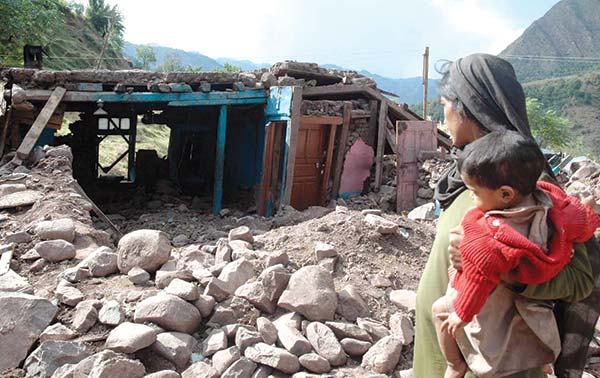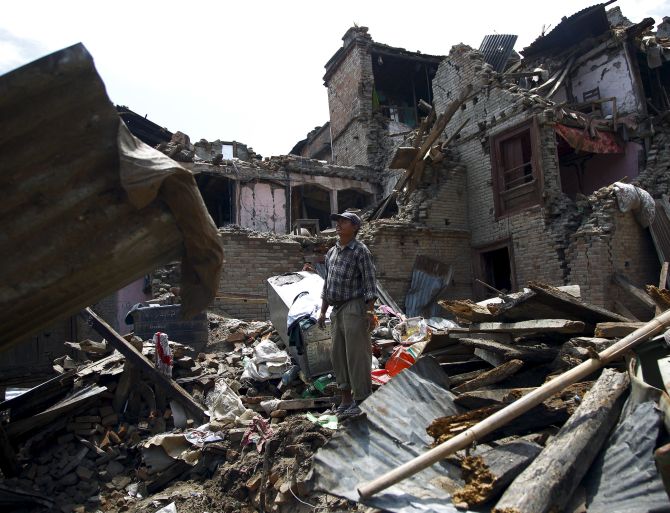
The epicentre of the 7.6 magnitude devastating earthquake was Muzaffarabad, Pakistan and it destroyed nearly 80 per cent of the town in Uri and Tangadhar.
IT was a usual day for Sheikh Mushtaq Hussain on October 8, 2005. He was on his duty; his wife was outside cutting grass to feed the cattle and their three daughters were getting ready for school.
It was 9:20 am, Hussain still remembers the time, when the whole village started shaking and his house collapsed.
It was the last time that Hussain and his wife saw their daughters. They were buried alive under the rubble.
Even after 15 years of the tragedy, the memories of that day still haunt many people of Uri and Tangadhar which were the worst affected areas in the earthquake that shook J&K in the fall of 2005. The epicentre of the 7.6-strong quake was Muzaffarabad, Pakistan and it destroyed nearly 80 per cent of the town in Uri and Tangadhar.
According to the Earthquake Disaster Risk Index Report 2019, about 1500 deaths were reported and 4,50,000 building collapsed in Kashmir valley due to the 2005 earthquake. The report also mentioned that the poor performance of the concrete buildings caused many life losses.
Hussain who is currently the Sarpanch of Sarai Bandi village, Uri told Kashmir Observer that before the earthquake hit the area, they had a big house with all the amenities.
“After the calamity, it took us 10 years to build a house of three rooms but it was not the same again,” the Sarpanch said, adding that even after 15 years, 35 per cent of people in Sarai Bandi live in tin sheds.

Like Hussain, Abid of Sultan Daki village of Uri saw his double-storey house turning into rubble. His family lived in the shed till 2013 before moving into a new house in 2014.
“The roads were blocked and we lived under a torn 10×10 plastic sheet,” he said. “At night, when it rained, we would huddle together to brave it inside that torn-plastic sheet.”
But when the rattling quake hit the garrison town of Uri nestled closer to the Line of Control, many, like Irshad Khawaja of Garkote area, had confused it with the usual frontier shelling.
“Living at proximity to the LoC, people had to check twice whether the shaking was because of earthquake or shelling,” he said.
But when he realized that it was an earthquake, he along with his family started running to a safer place. “My house collapsed in front of my eyes,” lamented Khawaja, adding, “when we stopped, we saw the big boulders falling from the mountains.”
The condition was so bad that even many people were not able to find the dead bodies of their relatives, he said.

When Khawaja went towards Kamalkote, the most affected village in Uri, the condition was worse. “Hum bata hi nahi sakte kya manzar tha (I can’t even describe the scenes).”
There were corpses everywhere, he recalled. “Houses were destroyed, a huge cloud of smoke enveloped the whole village and people were searching for their families.”
After their house collapsed, Khawaja lived in an open field with his traumatic family. Three days later, he said, help in the form of tents, food and treatment started pouring in.
At that time the Srinagar-Muzaffarabad road was under construction and 60 people from Nambla and Bilalabad villages had gone with the Border Road Organization (BRO) team to work as labour force.
When the earthquake struck, only four were found to be alive.
The remaining 56 people were covered under the debris and died, Khawaja said.
“The villagers were travelling in two vehicles and during the earthquake both the vehicles came under the rubble.”

With the onset of winters, the villagers stayed in the shed for six months and once the snow started melting, they began building their houses in March, Khawaja remembered.
“The government gave Rs. 1,30,000 to each household, out of which Rs 30,000 was given to build sheds,” he said.
According to Khawaja, the effects of the earthquake are still seen in the education sector in Uri.
He said many collapsed school buildings are still not in proper condition.
“90 per cent of school buildings were destroyed by the earthquake and even now 20-30 buildings in Julla Uri block are not fully constructed.”
Follow this link to join our WhatsApp group: Join Now
Be Part of Quality Journalism |
Quality journalism takes a lot of time, money and hard work to produce and despite all the hardships we still do it. Our reporters and editors are working overtime in Kashmir and beyond to cover what you care about, break big stories, and expose injustices that can change lives. Today more people are reading Kashmir Observer than ever, but only a handful are paying while advertising revenues are falling fast. |
| ACT NOW |
| MONTHLY | Rs 100 | |
| YEARLY | Rs 1000 | |
| LIFETIME | Rs 10000 | |











